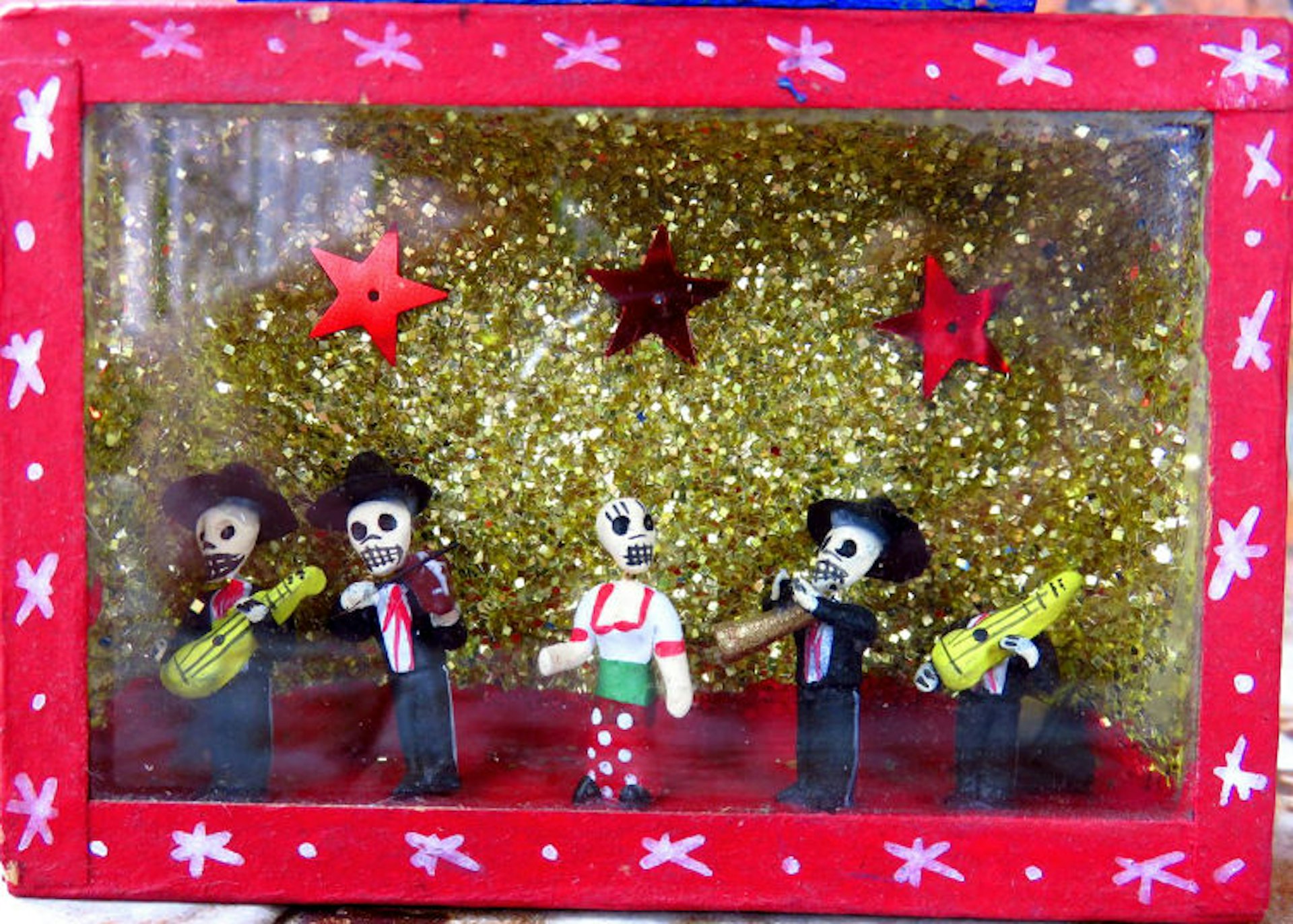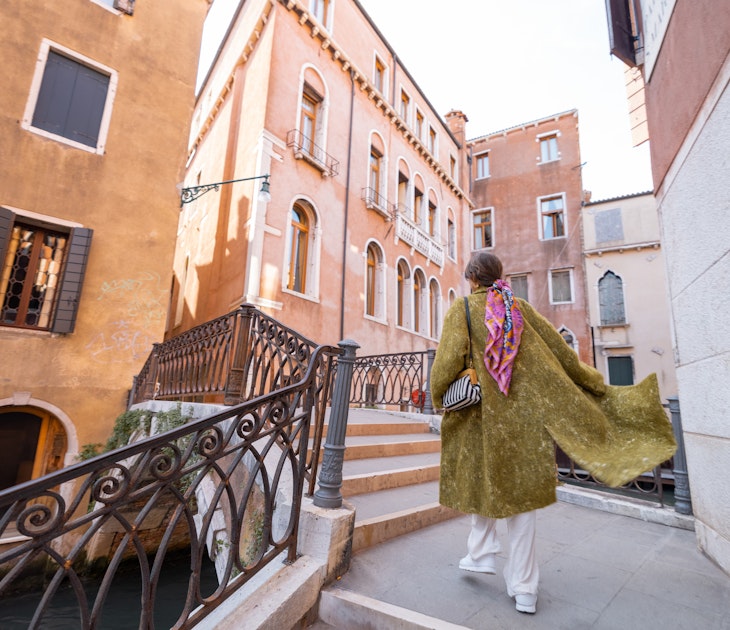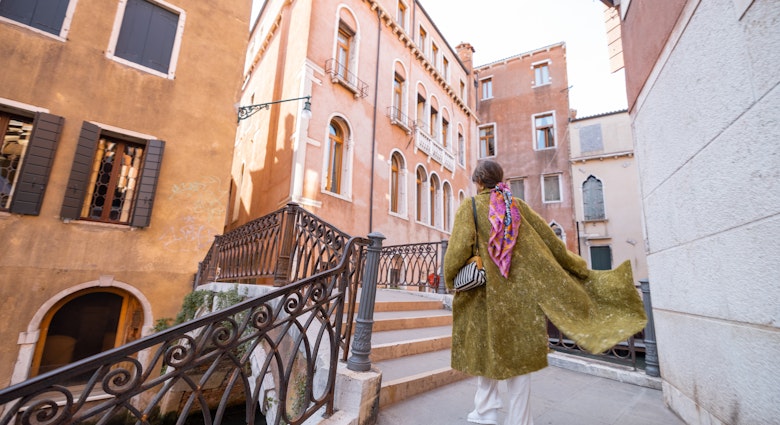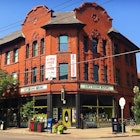Color, culture and happy skeletons: these elements sum up the artesanías (handicrafts) created by Mexico’s diverse indigenous peoples. Some designs have endured hundreds of years of cultural shifts. Others are recent twists that pop with Mexican bravado and make one-offs to remind you of your Mexico experience.
Here we take a look at the range of artesanías on offer, how to identify the best, and where to buy them.
Alebrijes
Adorable nightmare monsters

Where: Oaxaca
What: Multi-colored wooden figurines that blend different animals, real and imaginary.
Who: In 1936, Pedro Linares López had a feverish dream of a forest where the rocks, clouds, and animals melded into strange creatures. These visions included a rooster with bull’s horns and dogs with wings, which repeatedly cried ‘alebrijes’. López woke from the nightmare and reproduced these surreal monsters. This evolved and blended into the existing tradition of carving animals from copal wood in Oaxaca as a way to scare off dangerous animals. Today many of the alebrijes you’ll see are creations by whole families from small towns in Oaxaca state. Twisted animals are still the favorite subject, with nods to local coyotes and cacti.
Shop:
Textiles: Tapetes, rebozos, sarapes and huipiles
Color-rich handcrafted rugs, shawls and blankets

Where: Oaxaca, Estado de México and Coahuila.
What:
Tapetes (rugs)
Tapetes sport rich colors in stripes and ‘Aztec’ diamond patterns, and are used to adorn both floors and walls. Good quality rugs are made on foot-looms, many from Oaxaca, Chiapas and Estado de México (Mexico state), using dyes made of natural indigo and cochineal.
Rebozos (shawls)
The rebozo is incredibly versatile. You’ll see it slung across the back of a mother carrying a baby or over the shoulders of a girl attending an art opening. It’s often fringed and decorated with an ikat pattern, and at its best in natural fibers. Picture Mexican artist Frida Kahlo and you’re likely to imagine her dressed in a rebozo.
Huipiles (tunics)
A traditional tunic worn by indigenous women with the symbols, shapes and animals representing different classes, occasions (such as weddings) and regions of Mexico. They can be a variety of colors but you’re most likely to see white huipiles with colored embroidery.
Sarapes (shawl blankets)
Village workmen wear the cotton sarape, a cross between a rectangular poncho and a blanket. In the mountains it’s multiuse as clothing, blanket and pillow. Traditional dancers fold it across one shoulder. Sarapes are hard wearing and washable. You’re most likely to spot the ones from Coahuila state, which trace back to the region’s Chichimec people. They feature loud primary color stripes and Mayan patterns. Think Mexican blanket and you probably picture a sarape.
Shop:
Mascaras
Laughing in the face of evil

Who: Masks have been used for thousands of years in what is now Mexico. Once the Spaniards arrived, they tried to ban them because they satirised authority. The Mexicans response was to make more fun of their invaders, incorporating Catholic symbols such as the devil.
What: You’ll see masks of angels, demons and European faces, all used in dance and oral stories that have remarkably carried on to this day.
Where:
Chinelo of Morelos
Making fun of the rich overlords in Morelos state began in 1870 and continues today, with locals dressing up as a bumbling wealthy chinelo. The mesh masks look old-world European with pale skin, rosy cheeks and a full tusk-shaped beard.
Lucha libre
The creator of the first lucha libre (Mexican wrestling) mask was from León in Guanajuato state and was obsessed with the, then, new sport of wrestling from the USA. He made leather shoes for boxers for a living and applied these skills to leather masks for wrestler friends. The first mask was tight so that opponents couldn’t snatch it off. What started off plain has evolved into a glitzy symbol of Mexico itself.
Shop:
Huichol
Psychedelic colored skulls and animals

Where: Nayarit; Jalisco; Zacatecas
Who: The indigenous Huichol (‘healer’) people of northern Mexico whose unique peyote-infused style of handicrafts features multitudes of animals and the main items they worship: peyote cacti (symbolising enlightenment and life), corn and deer (spirit guides).
You can spot Huichol beadwork immediately by the eye-popping colors – artisans painstakingly glue on the plastic beads (traditionally they were made of bone, shell, stone or seed), one by one. You can find anything from earrings to whole masks or jaguar head sculptures completely decked out in beads. Beaded gourd bowls are traditionally used to hold offerings to the gods and goddesses, with different colors used depending on who is being called upon.
Shop:
Nichos
The dead celebrating everyday life

What: Little boxed dioramas usually showing people as skeletons, devils or angels made of painted clay. They’re also known as cajitas de muertos (Day of the Dead dioramas).
Whether you see them as popular art or just plain kitsch, nichos capture the grandeur of everyday life: a cantina is presented as glorious and glitter-filled as if it were a Catholic altarpiece; drinkers are shown as skeletons; the Virgen de Guadalupe (Mexico’s version of the Virgin Mary) wears inexpensive plastic flowers. You’ll also encounter strippers, undertakers and gay weddings behind the glass wall of nichos, all with the faces of skeletons, taking away some of death’s terror.
When: The Catholics also painted their saints on wooden retablos (tableaux), but Mexicans found humor in it and made it accessible. Nichos are most popular during Day of the Dead, but available all year round.
Shop:
Talavera
Tilework with Asian and Middle Eastern influences
Where: Puebla
Poblano Talavera is a ceramic unique to Puebla, made using local clay and indigenous skills. Visit the area and you can’t miss the azulejos, glazed tiles painted in royal blues and other colors, adorning the city’s many churches.
What: Authentic talavera (though some knock offs aren’t bad) is a tin-glazed ceramic that incorporates techniques that date from the 16th Century, introduced by the Spanish. It should be hand painted with natural inks from a palette of only six colors – blue, green, yellow, orange, mauve and black.
Shop:
Puebla: Celia’s Café; Talavera Uriarte
Hojalata
Mirrors, sacred hearts and the racy everyday

What: Tin is cut, crimped and stamped to look like lace, hearts and animals. Often this will adorn a mirror. In the 60s, bright paint was added, a style which you’ll find a lot of today.
When: This is a relatively recent art form, having been around for a mere 90 years.
The tinwork tradition uses any cheap metal that's at hand, even aluminum cans. Explicit scenes of sex, violence, religion and everyday life are painted onto soft drink cans. You might find a doodle of a woman watching TV while having sex, with the words underneath in Spanish, ‘My favorite soap opera’.
Shop:
Phillip Tang is the author of the Around Mexico City chapter of Lonely Planet’s Mexico guidebook. More of Phillip’s Mexico articles, gifs and photos are on philliptang.co.uk, and you can follow him @philliptang. Google+: https://plus.google.com/+PhillipTang1












